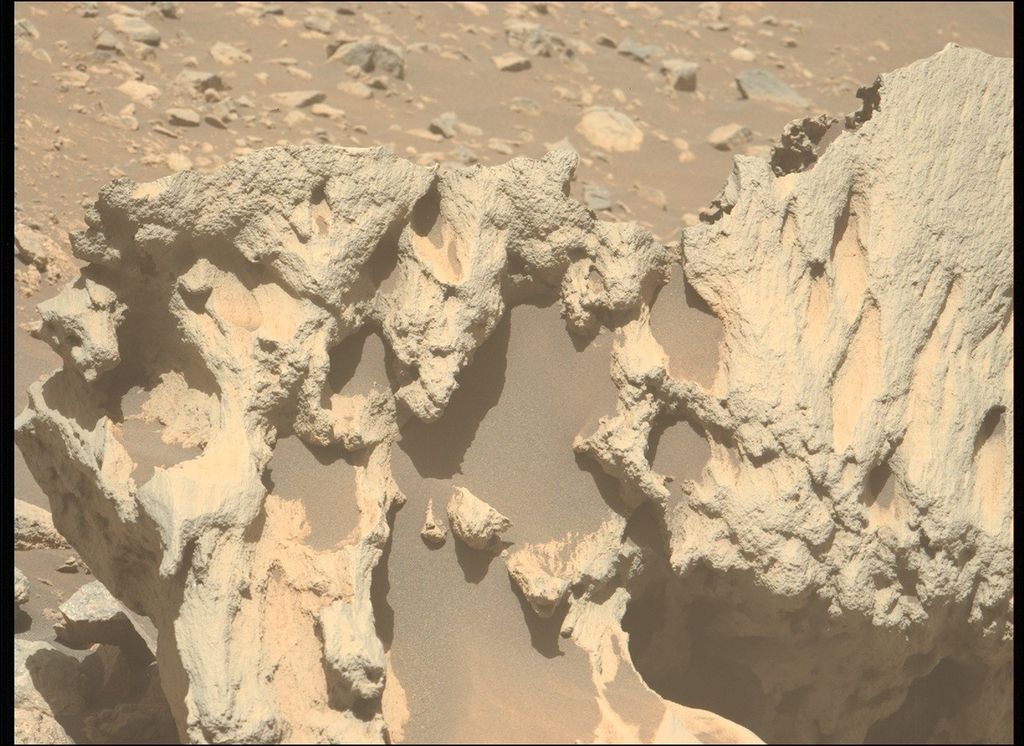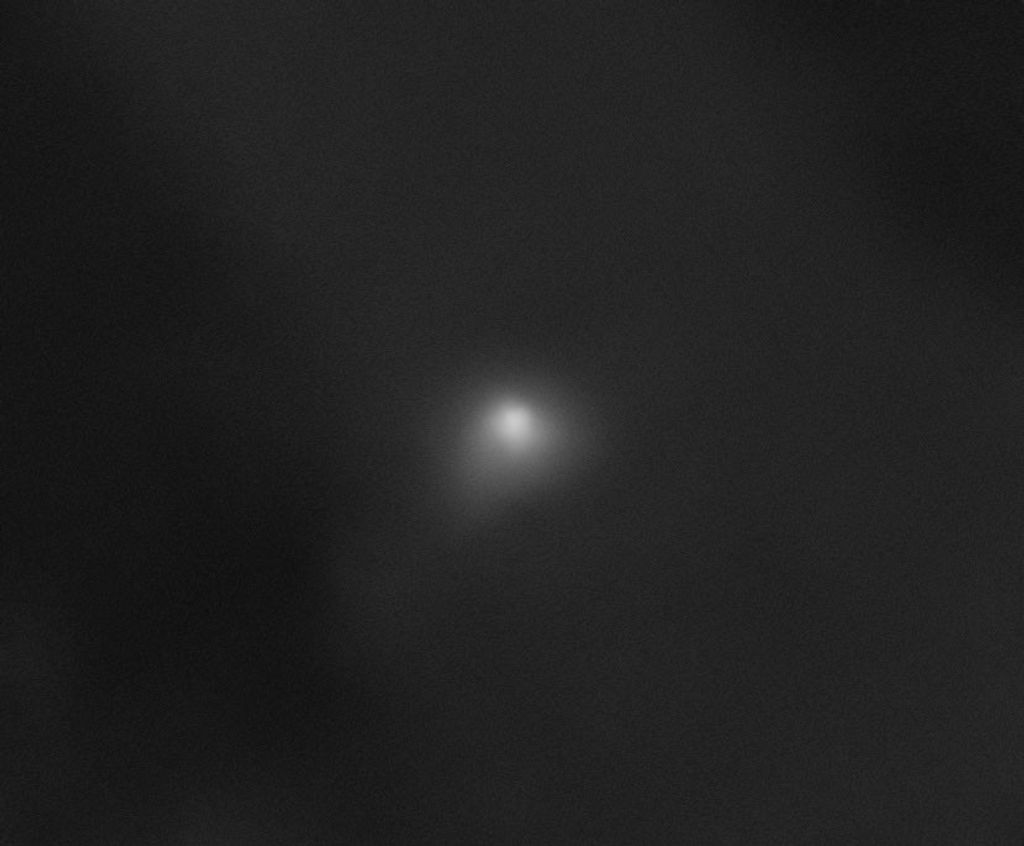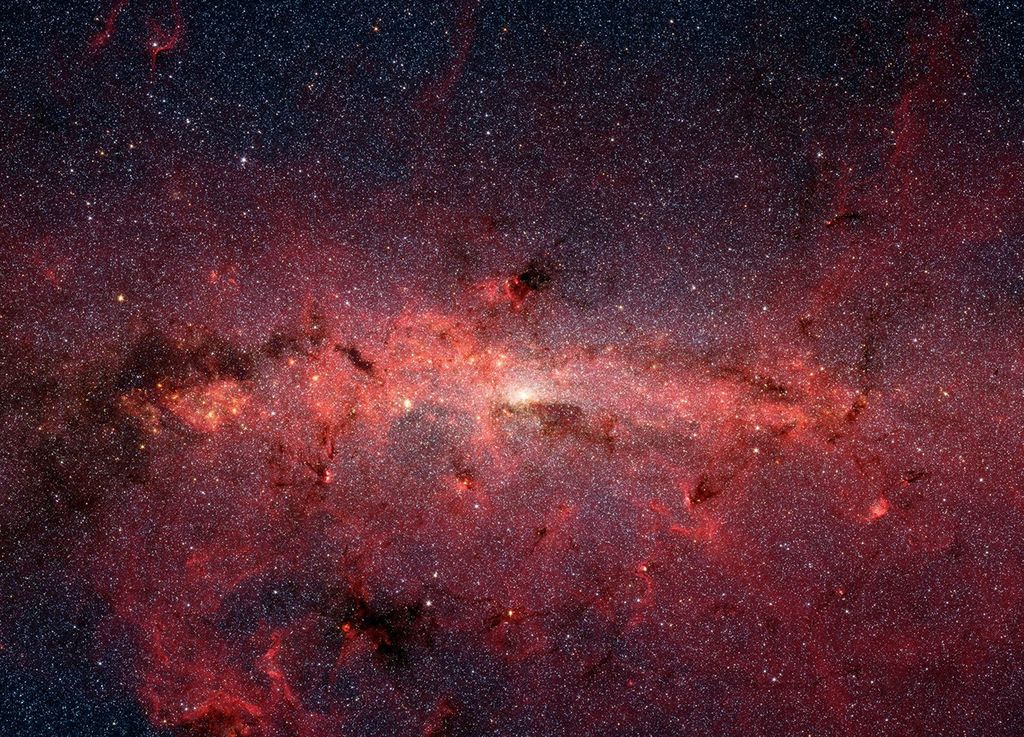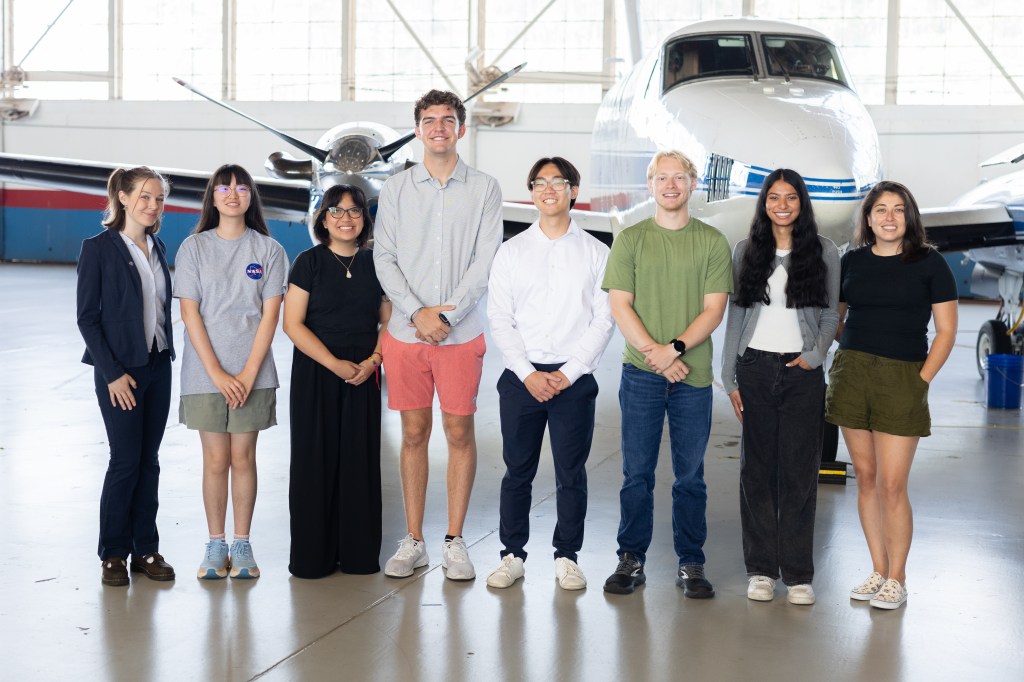
Faculty Advisor:
Dom Ciruzzi, William & Mary
Graduate Mentor:
Sarah Payne, University of California, Santa Barbara
Ecohydrology Group Introduction
Faculty Advisor Dom Ciruzzi and Graduate Mentor Sarah Payne
Ethan Bledsoe
Uncovering Hidden Green to Reveal Water: Can Spectral Unmixing of Vegetation Reduce Evapotranspiration Bias in Semi-Arid Landscapes?
Ethan Bledsoe, Northwestern University
Deserts push life to its limits, presenting sparse vegetation and scarce water that challenge traditional methods for accurately capturing evapotranspiration (ET). Current satellite ET estimates often struggle in dryland areas. These estimates typically rely on vegetation indices like the Normalized Difference Vegetation Index (NDVI), which can be distorted by bright desert soils and sparse vegetation. This distortion leads to inaccurate ET estimates, affecting crucial decisions related to drought management and water resource planning. To address this problem, we used a technique called Multiple Endmember Spectral Mixture Analysis (MESMA), which classifies pixels into percentages of green vegetation, soil, and shade based on unique spectral signatures. We created a spectral library using high-resolution (1 m) hyperspectral images collected from the NEON Airborne Observation Platform (AOP) over the Santa Rita Experimental Range (SRER). This library was then applied to imagery at different resolutions—medium-resolution (30 m) Landsat 8 Operational Land Imager (OLI) satellite imagery and lower-resolution (500 m) Moderate Resolution Imaging Spectroradiometer (MODIS) satellite imagery—to produce more accurate fractional vegetation maps. We integrated these detailed vegetation maps into OpenET’s Priestley-Taylor Jet Propulsion Laboratory (PT-JPL) ET model and compared the results to ground-based ET measurements from the SRER flux tower near Tucson, Arizona. On August 20, 2021, all models underestimated ET compared to flux tower observations. Among them, the standard PT-JPL model produced the closest estimate, while MESMA-based ET values were lower and generally declined further with decreasing spatial resolution. Because our method uses publicly available imagery and a remotely collected spectral library, it can be applied to other desert regions, enhancing our understanding of modeling ET and, in-turn, improving our water management in an increasingly arid world.
Rylee Chafin
Examining Changes in Vegetation Moisture Indices and Biodiversity Estimates at the San Clemente Dam Removal Site in California
Rylee Chafin, University of North Georgia
With dam removal becoming a more widespread practice, it is important to understand how riparian ecosystems respond to these hydrological changes. Airborne Visible Infrared Imaging Spectrometer (AVIRIS) flights over the San Clemente Dam near Carmel, California provide an ideal opportunity to understand changes in hydrology and biodiversity across an entire watershed, rather than at small vegetation plots. This case study investigates the only large dam in the nation that has had sufficient AVIRIS data to understand these changes. This study processed AVIRIS data from August 2015 and October 2019 and examined how the Normalized Difference Moisture Index (NDMI) changes between the two flights. This data was then compared with two stream gauges located downstream of the dam to better understand the hydrology of this watershed and the effects of dam removal on streamflow. Then, I used the AVIRIS data to create estimated alpha diversity maps using the biodivMapR R package. This study found that NDMI and alpha diversity estimates were correlated in the riparian area. This indicates that moisture and plant biodiversity have changed across the riparian ecosystem, possibly as a result of dam removal, and helps us understand the ecological implications of this practice. Future AVIRIS (or other hyperspectral) flights over other dam removal sites can help expand this research to evaluate the effectiveness of these methods and better establish correlation between dam removal, moisture, and biodiversity.
Sumaya Tandon
Tracking Tree Emissions from the Sky: Improving Isoprene Estimates with MEGAN
Sumaya Tandon, Trinity University
Isoprene, a biogenic volatile organic compound, is emitted from tree species and contributes to the formation of secondary pollutants such as formaldehyde and ozone. With its short atmospheric life span of up to an hour and complex emissions dynamics, it is hard to quantify, and therefore predict, how much of it is in the atmosphere. This study employs the Model of Emissions of Gases and Aerosols from Nature (MEGAN) to estimate isoprene emissions in California and Missouri, two regions with contrasting vegetation types, during the summer of 2013. The predictions were compared to airborne data, specifically whole air sampling, from the flight campaign SEAC4RS to evaluate MEGAN’s accuracy. Specifically, to parameterize MEGAN this study utilizes the North American Data Assimilation System (NDLAS) to compile a list of meteorological and surface variables. Two different models were run, one with consideration of drought stress and one without, to evaluate the impact of water stress on modeled isoprene emissions. The results of this study show MEGAN consistently underpredicted isoprene in both regions with and without water stress consideration. However, including drought stress can potentially improve predictions for areas with very low-emissions suggesting that accounting for water stress may improve MEGAN. With these findings in mind, it’s beneficial to integrate ecohydrological understanding into emissions models. Isoprene emissions from airborne data has rarely been used in the context of studying drought with MEGAN, therefore this work highlights the importance of understanding and refining stress response parameters- a crucial step towards improving predictions of biogenic emissions for future climate scenarios.
TJ Ochoa Peterson
Understanding the Relationship Between Cloud Type and Evapotranspiration in Shrubland Vegetation
TJ Ochoa Peterson, Michigan State University
Evapotranspiration (ET) is a key indicator of ecosystem health, representing water flux from the surface to the atmosphere. High ET values can result, in-part, from water-intensive vegetation while the inverse can indicate insufficient water for evaporation. A persistent challenge in remote sensing ET is cloud contamination. Thermal infrared sensors used to derive remote sensed ET apply cloud masking which removes affected pixels and results in data gaps. Although prior studies have examined the impact of cloud amount on ET, the influence of specific cloud types remains underexplored. This study investigates how distinct cloud types (Cumulus, Altostratus, and Cumulonimbus) affect surface-level ET over shrubland vegetation in Tucson, Arizona, during the North American Monsoon season. Cloud classification was performed using Cloud Optical Depth (COD) and Cloud Top Pressure (CTP) from GOES-18 Level 2 products, following criteria from the International Satellite Cloud Climatology Project (ISCCP) dataset. These classifications were compared against in-situ ET observations from the Santa Rita Experimental Range NEON flux tower. Results indicate that cloud presence generally reduces instantaneous ET relative to preceding clear-sky conditions. Clouds with low altitude and low density (Cumulus, Stratocumulus) generally showed brief reductions in ET. Notable results include ET values observed under high COD and low CTP conditions, characteristic of Cumulonimbus clouds, did not differ significantly from clear-sky conditions. Future research should incorporate cloud-type into ET models to improve accuracy, particularly in regions prone to frequent cloud cover. Further work could deduce cloud-type patterns for the intent of data gap filling models that estimate ET during cloud-contaminated periods, reducing data loss and enhancing understanding of land-atmosphere interactions.
Rachel Faessler
Comparing Tree Biodiversity in San Jose, California Using Hyperspectral Imagery and Ground Data
Rachel Faessler, University of Wisconsin-Green Bay
Street trees provide a myriad of ecosystem services, such as cooling air temperature, improving air quality, reducing runoff, and improving human well-being. Furthermore, having many different species of trees (high biodiversity) is important, as this improves the overall resilience of a forest community to disturbances, which increases reliable access to ecosystem services. Airborne hyperspectral data is often used to measure biodiversity or health of trees in natural forests, but rarely in urban environments. When urban ecosystems are studied, the focus is on interactions with humans or the local effects of vegetation. Uniquely, this study seeks to compare indicators of alpha and beta diversity compiled from Airborne Visible/Infrared Imaging Spectrometer (AVIRIS) hyperspectral imagery (collected in 2024) and Dryad ground-based sampling of 264,000 street trees in San Jose, California (collected in 2021). There appears to be more spatial variability in the AVIRIS estimated beta diversity than in alpha diversity. There is a modest correlation between ground and AVIRIS derived measures of alpha diversity, which is a step forward in expanding estimates of tree biodiversity in cities using hyperspectral imagery. Future work could connect spatial variation of biodiversity to city planning measures such as income, residential/business areas, income, or redlining; compare hyperspectral diversity to areas of alpha diversity with consistent sampling; or build on different measures of diversity than species diversity (e.g. isohydricity).
Katie Wilson
How Does Antecedent Soil Moisture Influence Flooding in the Southeastern U.S.? A Case Study in Athens, Georgia
Katie Wilson, North Carolina State University
Floods are the most common and deadly natural disaster in the United States, known for their rapid and widespread impacts. While previous research has examined how antecedent soil moisture (ASM) affects flood severity, relatively little work has focused on the Southeastern United States. This region is especially vulnerable due to high annual rainfall and tropical systems, both of which can lead to flooding. To address this gap, this study investigates the relationship between ASM and streamflow response during rainfall events in Athens, Georgia, located within the South Atlantic-Gulf watershed. Precipitation datasets (1977–2025) were compiled from three NOAA National Centers for Environmental Information weather stations in Athens. Streamflow data was obtained from the USGS Apalachee River near Bostwick, GA (1977–2025). ASM data was gathered from the Soil Climate Analysis Network (SCAN) Watkinsville station (1997–2025) and NASA’s Soil Moisture Active Passive (SMAP) satellite (2015–2025). Precipitation events were binned by total rainfall, with maximum streamflow recorded during the event and ASM taken from the day prior. Events were grouped into four rainfall categories (0–1″, 1–2″, 3–4″, and 5–6″), and streamflow responses were compared between low (0-40%) and high (60-100%) ASM conditions using the Kruskal-Wallis H test. Results showed statistically significant differences (p < 0.05) in streamflow dependent on ASM across all rainfall bins, confirming that wetter antecedent conditions increase runoff and flood potential. Incorporating ASM into flood forecasting models, along with tools like SMAP, can improve early warning systems in the Southeast U.S. and enhance flood preparedness.































